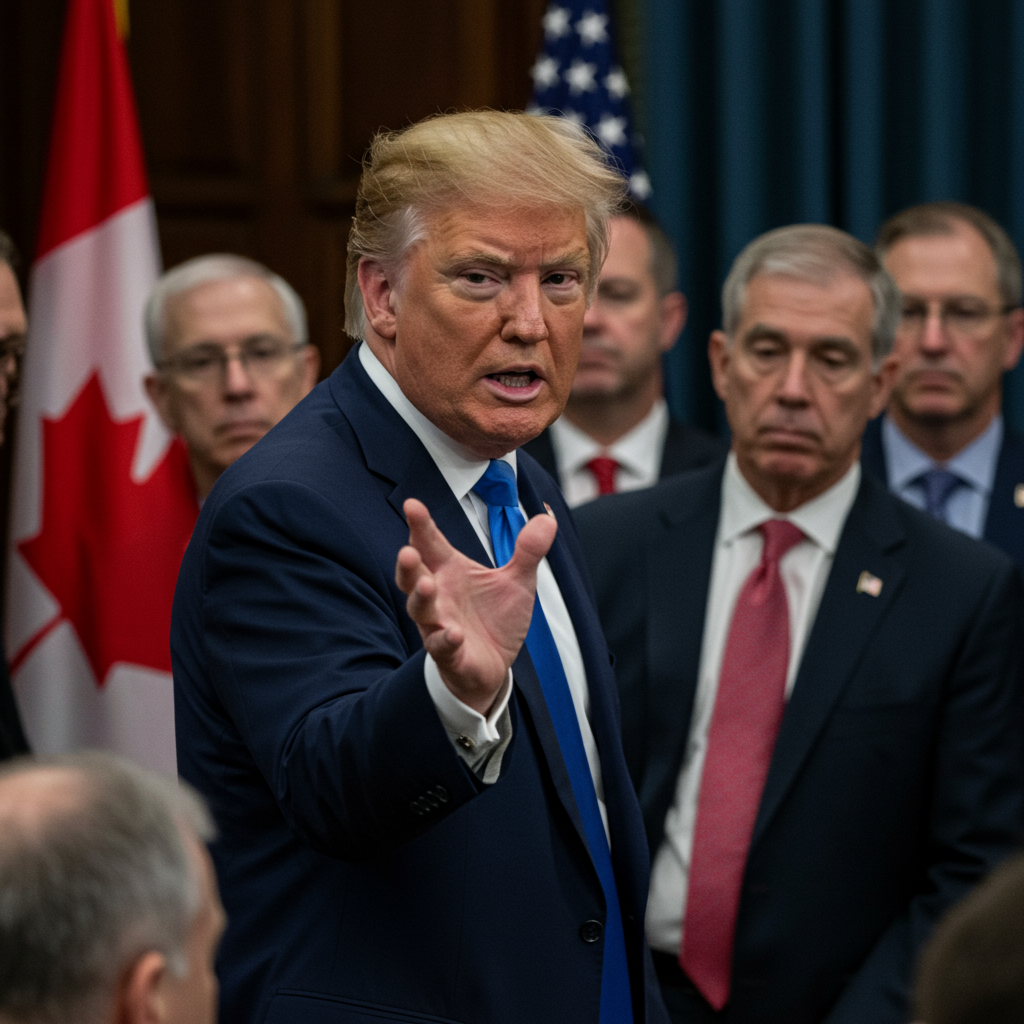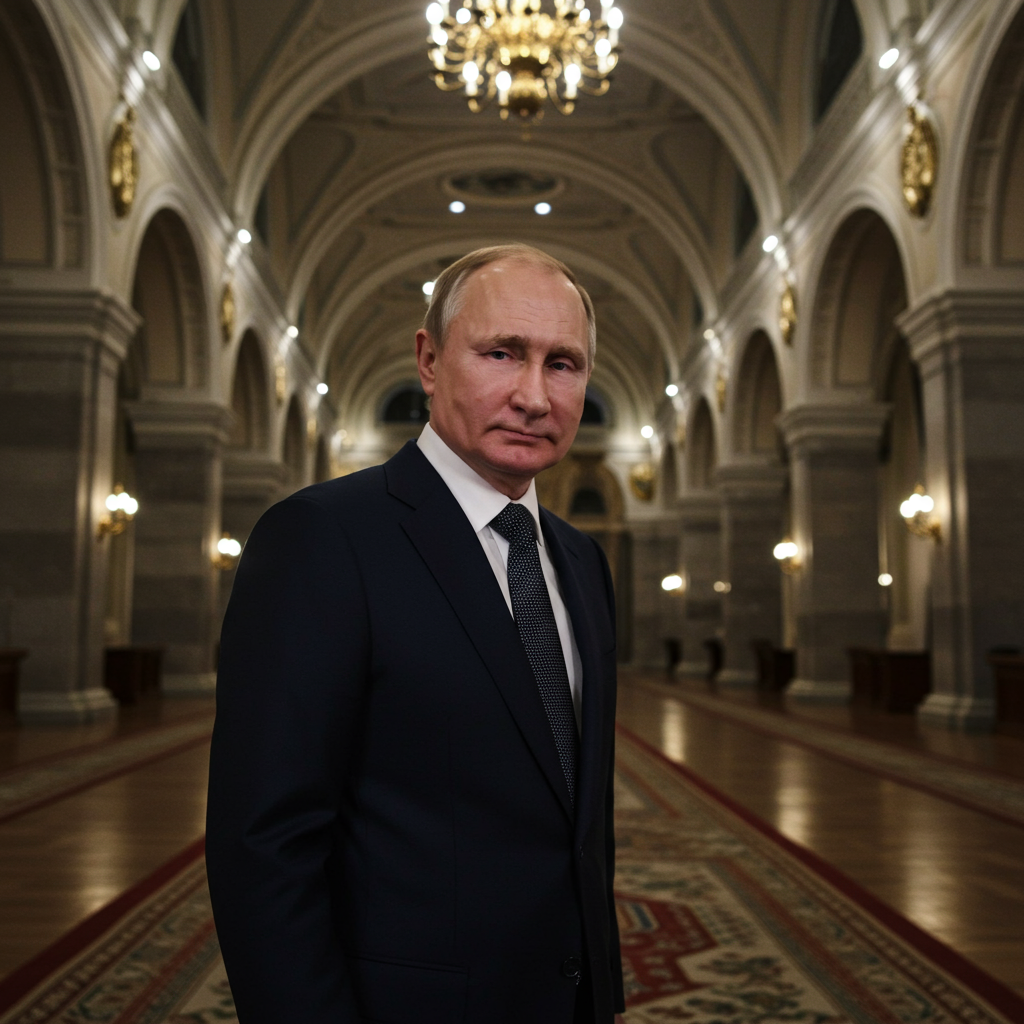Intense trade negotiations between Canada and the United States have reached a critical juncture. Amidst these high-stakes discussions, U.S. President Donald Trump has delivered another jolt, threatening an unexpected 35% tariff on a wide range of Canadian goods starting next month. This latest move adds significant pressure to already fraught trade talks aimed at securing a new bilateral agreement.
This escalating trade tension places a sharp focus on Canadian Prime Minister Mark Carney. Having won the April election partly on a promise to stand strong against American pressure – employing a popular “elbows up” ice hockey metaphor for an assertive approach – Mr. Carney now faces increasing scrutiny. Critics question whether his government is truly capable of defending Canadian interests and securing the fair deal he pledged.
Trump’s Escalating Tariff Pressure
President Trump’s administration has systematically increased trade pressure on Canada throughout 2025. This includes a 25% tariff on Canadian auto parts implemented in March, justified on national security grounds. In June, existing duties on Canadian steel and aluminum were doubled, surging to a steep 50%. The newest threat, announced on July 11, targets a broad spectrum of Canadian imports with a 35% levy.
Justifications cited by the White House for the July tariffs include allegations of Canadian “financial retaliation” to previous US duties, a perceived “Trade Deficit” with Canada, Canadian tariffs on American dairy imports (framed as a national security matter), and concerns over fentanyl crossing the border. However, data from U.S. Customs and Border Protection suggests a different reality regarding fentanyl, with less than 1% entering the US from Canada. This indicates the drug issue may serve as a politically convenient justification rather than a factual basis for the tariffs, viewed by some observers as a strategic power play by President Trump.
Trump’s recent tariff announcements are not confined to Canada. He has sent similar tariff-threatening notes to over 20 countries globally as part of a wider push for new trade agreements, proposing rates generally ranging from 20% to 40%. Notably, a White House official indicated that many existing carveouts for Canadian goods, including vital sectors like oil, would likely remain in effect despite the new 35% threat, adding a layer of complexity to the announcement’s immediate impact.
The “Elbows Up” Promise Meets Reality
Mark Carney campaigned on a platform emphasizing competence and a willingness to challenge Washington, delivering an “elbows up” speech in April that resonated with Canadians tired of perceived bullying from their southern neighbor. This defiant rhetoric initially garnered public and media support. However, recent actions by the Canadian government have led critics to suggest a shift away from that tough stance.
A key instance came in late June with Canada’s decision to scrap its planned Digital Services Tax (DST). This tax, intended to impose a 3% charge on Canadian revenue above C$20 million for major US tech companies like Amazon, Meta, Google, and Apple, was designed to ensure these firms paid their fair share. Estimates projected it could generate over C$2 billion in its first year. However, following a direct threat from President Trump to halt trade negotiations over the policy, Canada suspended its implementation. The White House wasted no time, publicly characterizing Canada’s move as having “caved” to its demands and celebrating it as a “big victory for our tech companies.” Prime Minister Carney stated the decision was “part of a bigger negotiation” aimed at resuming stalled trade talks, suggesting a strategic concession to keep diplomacy alive.
Beyond the DST, other instances are pointed to as evidence of Canada backing down. Earlier in the year, Canada pledged C$1.3 billion to enhance shared border security and appointed a “fentanyl czar,” seemingly in response to President Trump’s focus on the drug issue, despite contradictory border data. Furthermore, when the US doubled tariffs on Canadian steel and aluminum last month, Ottawa did not immediately implement further countermeasures, delaying planned retaliatory tariffs from July 21 to August 1, conditioned on the outcome of the current talks.
Critics Question Carney’s Strategy
The perceived concessions have ignited debate within Canada, prompting sharp criticism from commentators and political opponents. Canadian commentator Robyn Urback suggested Prime Minister Carney’s “elbows were getting tired,” describing the government’s up-and-down approach to negotiations as a “chicken dance.”
Blayne Haggart, a political science professor at Brock University, argued in a recent opinion piece that “Nothing about Carney’s US strategy, particularly his pursuit of a ‘comprehensive’ trade and security agreement, makes a lick of sense.” He contended that walking back the Digital Services Tax achieved “less than nothing.” Opposition leader Pierre Poilievre has been a vocal critic, accusing Carney of “folding” or “surrendering” under pressure and failing to stand up forcefully for Canadian workers. Mr. Poilievre urged the Prime Minister to use the resumed talks to demand the immediate removal of US tariffs on Canadian softwood lumber.
This criticism is particularly impactful for Carney, whose election win was significantly buoyed by a wave of anti-American nationalism fueled by Trump’s actions. Canadians, according to polls, trusted Carney’s background in international finance and his stated intent to challenge Trump more than Poilievre, who was sometimes seen as ideologically aligned with the “MAGA” movement. Yielding now, especially on issues like the DST that were presented as necessary domestic policy, carries significant political risk for Carney’s image and future standing.
A Strategic Choice or Capitulation?
Despite the criticism, many observers are willing to give Prime Minister Carney more time, noting that recent polls still indicate strong support for his government overall. Defenders suggest Carney’s approach might be a calculated strategic move rather than outright capitulation, prioritizing long-term economic stability over short-term bravado.
Roland Paris, a former advisor on Canada-US relations, cautioned against judging concessions prematurely. “Much will depend on the final agreement,” he told the BBC, acknowledging that President Trump is clearly a difficult negotiator. However, Paris also warned that if the final deal appears to show Carney having capitulated and results in a bad outcome for Canada, he will face a significant political price at home.
Experts like Fen Hampson, a professor of international affairs and negotiations expert, offer insights into Canada’s leverage. Despite its smaller economy compared to the US, Canada has bargaining power. Hampson points out that American consumers ultimately pay the tariffs, and many US-based manufacturers rely heavily on Canadian inputs like steel and aluminum, which are currently subject to high tariffs. “You can’t judge the outcome of negotiations by the last move or the concession that’s made,” Hampson noted. “You can only judge it by its outcome.”
Sources close to the Prime Minister’s Office reportedly suggest internal polling supports avoiding a full-blown trade war, particularly among swing voters. Given Canada’s significant economic reliance on the US (over 76% of exports), a prolonged trade conflict could severely damage the Canadian economy, potentially leading to job losses and recession. Delaying retaliatory measures and keeping negotiations open could be seen as prioritizing economic damage mitigation and giving diplomacy a final chance, potentially earning Canada goodwill among international allies by playing the “diplomatic adult.”
Canada’s Industry Minister Melanie Joly defended the government’s approach, stating that they “does not negotiate in public” and denying that Canada is not standing up to Trump. She highlighted the challenge of dealing with a “very unpredictable US administration,” noting that “we’re not the only ones.”
Broader Strategy and The Deadline
Beyond the immediate tariff disputes, Canada is also pursuing a broader strategy to reduce its economic reliance on the United States. This includes diversifying trade partnerships, such as signing an arms deal with the European Union, and implementing domestic reforms aimed at fast-tracking major projects and removing internal trade barriers.
Meanwhile, the clock is ticking towards the revised August 1 deadline for a potential trade agreement. While the 35% tariff threat looms, it’s important to note that, at least for now, the proposed rate would reportedly not apply to goods covered under the existing US-Mexico-Canada free trade agreement (USMCA), which encompasses the vast majority of cross-border trade.
Domestically, Canadian politicians across the political spectrum remain largely united in their opposition to President Trump’s tariffs, even while disagreeing on the best way to respond. Conservative leader Pierre Poilievre has stated his party is ready to help secure the best deal, while provincial leaders like British Columbia Premier David Eby have highlighted the need for Canadian unity in the face of US pressure.
The coming weeks leading up to the August 1 deadline represent a critical test for Prime Minister Carney. He must navigate intense pressure and domestic criticism, striving to secure a deal that can be portrayed as a win for Canada while avoiding the significant economic fallout of a full trade war. The outcome will determine not only the future of Canada-US trade relations but also the political fortunes of the government that campaigned on standing tall against American might.
Frequently Asked Questions
What are the main criticisms of Prime Minister Carney’s handling of Trump’s trade threats?
Critics argue that despite promising an “elbows up” stance, Prime Minister Carney’s government has made significant concessions under US pressure. Key criticisms include scrapping the planned Digital Services Tax (DST), perceived as caving to Trump’s demands, and delaying counter-tariffs on US steel and aluminum. Opponents question if these actions demonstrate a willingness to stand firm and secure the best deal for Canada.
What was Canada’s Digital Services Tax and why did the government drop it?
Canada’s proposed Digital Services Tax (DST) was a 3% levy on Canadian revenue above C$20 million earned by large multinational tech companies. It aimed to ensure companies like Google and Meta paid taxes on profits generated from Canadian users. Canada dropped the tax in late June 2025 after President Trump threatened to end trade negotiations over the policy, with the Canadian government stating it was a concession made “part of a bigger negotiation” to allow trade talks to resume.
Why might Canada be choosing diplomacy and concessions despite facing US tariff threats?
Some experts and government sources suggest Canada’s approach is a strategic calculation to avoid significant economic damage. With over 76% of Canadian exports going to the US, a full trade war could trigger job losses and potentially a recession. Delaying retaliation and making concessions, like dropping the DST, could be seen as prioritizing economic stability and giving diplomacy a final chance to reach a manageable agreement before further escalation.




